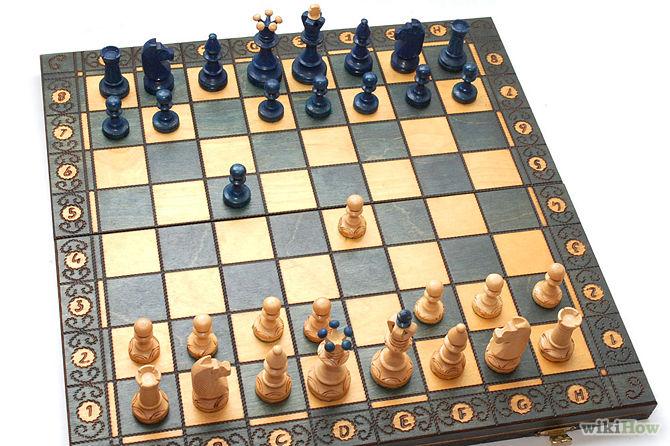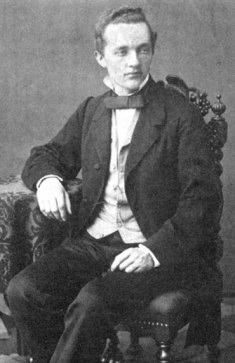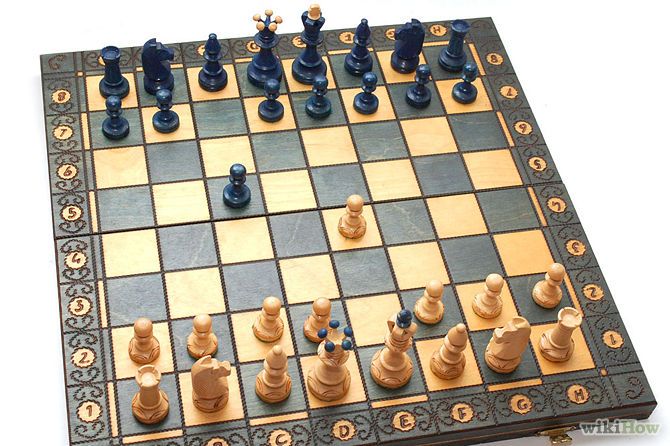
The Paulsen Sicilian: A History
The Open Sicilian can be broken down into four basic systems.
In one, the Dragon, the black bishop is fianchettoed on g7.
In the Scheveningen, it is developed on e7 while Black adopts a "little center" of pawns on d6 and e6.
In a third, the black e-pawn is pushed to e5, leaving the d-pawn backwards -- this encompasses the Boleslavsky variation, the Lowenthal/Kalashnikov, and Sveshnikov Sicilians.
And a final development pattern involves Black playing ...e6 but leaving the dark bishop free to develop to a variety of squares such as b4, c5, or even d6. The last scheme encompasses the Taimanov, Paulsen, and a variety of obscure systems.
To make things clear, this article covers the opening that begins with 1.e4 c5 2.Nf3 e6 3.d4 cxd4 4.Nxd4 a6:
To some, this is called the Paulsen variation, after the 19th-century master Louis Paulsen. To others, it is the Kan variation, named after the Soviet theoretician Ilya Kan.
There is some confusion about nomenclature here, as well as the related Taimanov variation (with the black knight going to c6). But according to my understanding, the above opening line can be called either "Kan" or "Paulsen."
Louis Paulsen, The Greatest Chess Philosopher:

Who was chess's greatest thinker and innovator? Was it Wilhelm Steinitz, who brought chess out of its days of careless -- if inspired -- attacks and poor defenses, and laid down scientific principles?
Was it Emanuel Lasker, who saw chess as a fight of a higher order?
Or was it Aron Nimzowitsch, who revolutionized the understanding of the center and positional chess?
No. It was Louis Paulsen, if only because he could think longer than anyone else -- in the days when he competed, before the chess clock was used, players could spend as long as they wanted on a game.
And Paulsen was the one who took it to the most extreme level, sometimes even taking up to 15 hours for a game!
In all seriousness, I doubt there has ever been a player who was so far ahead of his time in understanding. And yet, Paulsen is not known so well by the general chess public.
The number of openings he created, from his own mind, is amazing. Especially in the Sicilian -- Paulsen invented the Dragon, the Boleslavsky variation, and was the conceptual author of the Paulsen system.
In essence, he conceived most of the ideas that make up the modern-day Sicilian. And some of them were not "discovered" until 100 years after he played them.
Paulsen's inventions in the opening were not just a result of a creative mind or one who is focused on the openings. His innovations came out of a deep understanding of positional chess.
In the age when most games began with 1.e4 e5, Paulsen understood the concept of asymmetrical play. He understood the ideas of defense and positional advantage, even before Steinitz did.
In playing the Sicilian, he created a basic positional advantage (more black central pawns) and then created various systems to build up a proper defense, in order to strengthen the position and neutralize White's attacking chances.
It has to be suspected that Paulsen had a huge influence on Wilhelm Steinitz and inspired his later theories. Even before Steinitz, Paulsen understood (although he never said it) that chess was based on scientific principles -- that an attack could not be created by sheer brilliance, but that it came from a properly built-up game.
Paulsen never wrote about his special understanding of chess, but it comes through in the openings he created.
And yet, strangely enough, Paulsen never played what we now know as the Paulsen Sicilian!

Nevertheless, he was one of the first exponents of the concept that eventually became the exact move order at the start of this article.
Louis Paulsen used two related systems: 1.e4 c5 2.Nf3 e6 3.d4 cxd4 4.Nxd4 Bc5!? (a fairly uncommon line nowadays, but related to the Paulsen) and 4...Nf6 followed by ...Nc6.
Louis Paulsen's elder brother, Wilfried Paulsen, used the actual modern-day move order with 4...a6, and one can guess that the brothers may have studied these lines together.
But according to my database, the first master who used the 4...a6 move was Adolf Anderssen in 1859, after the basic concept had already been used (primarily by Louis Paulsen).
And yet, despite its ancient pedigree, the Paulsen Sicilian is seen as a very modern opening. Indeed, after the beginning of the 20th century it was only seen in a handful of master-level games until the 1950s, when the Soviet masters re-discovered it -- especially Kan and Lev Polugaevsky.
Anderssen connected the opening with the idea of playing a quick ...d5 in one move, transferring the game into some sort of torturous French. He duly outplayed his opponent:
The first game by a Paulsen (Wilfried Paulsen) showed one of the possible alternative developments of the black king's bishop -- to b4. This system is still the most frequent answer to White's kingside fianchetto today:
In the early part of the 20th century, the Paulsen was not frequently seen. However, Savielly Tartakower was one of the few masters who utilized it. Part of the reason that the Paulsen went out of fashion might have been the fact that Black allows White to play c2-c4, creating a Hedgehog type of position.
In those days, setups like the Hedgehog were not so highly regarded -- it was considered that White's spatial advantage gave him a clear edge. Tartakower's early attempt to put pressure on White's center by ...Bb4 led to a difficult game:
Having lost faith in the natural response to White's space grab, the remaining Paulsen players played an early flexible ...Qc7, leading to the Hedgehog. Tartakower later played that, and Black's maneuvers -- particularly the ...Rac8, ...Qb8, ...Be7-d8 -- look very modern.
But playing a Hedgehog requires patience, and Tartakower broke in the center with ...d5 too early. This caused White's extra mobility to become relevant when the position opened up:
Perhaps as a consequence of these failures, the Paulsen was neglected until the late 1950s.
Check back next week to find out how the Paulsen Sicilian slowly grew in popularity over the past 60 years.
RELATED STUDY MATERIAL
- Read GM Smith's last article, The French Winawer: A History.
- Watch GM Roman Dzindzichashvili's video lesson on the Paulsen Sicilian.
- Take a lesson on the Paulsen Sicilian in the Chess Mentor.
- Solve some puzzles in the Tactics Trainer.
- Looking for articles with deeper analysis? Try our magazine:The Master's Bulletin.






